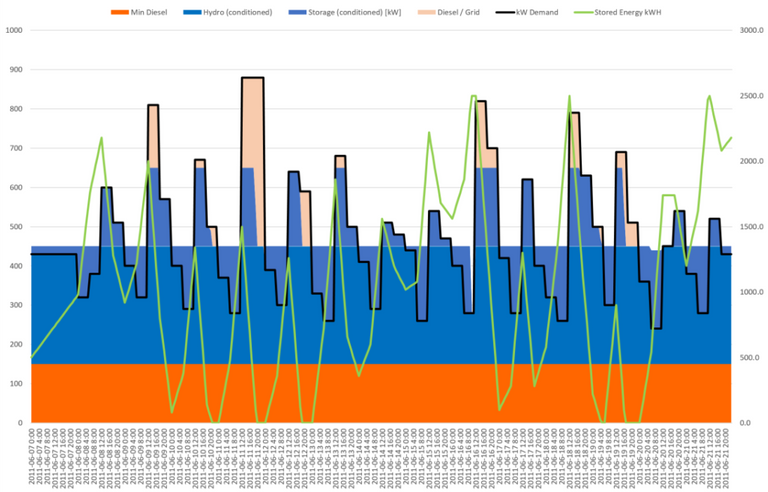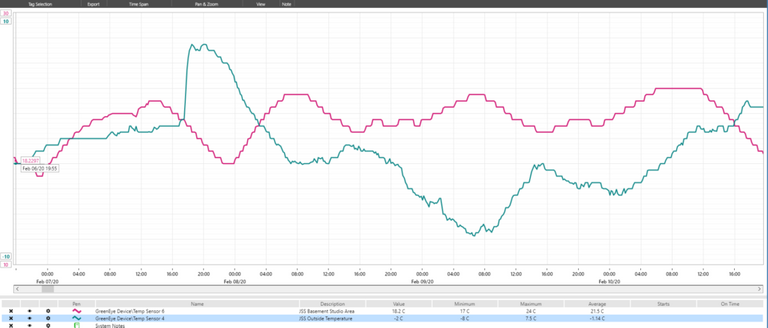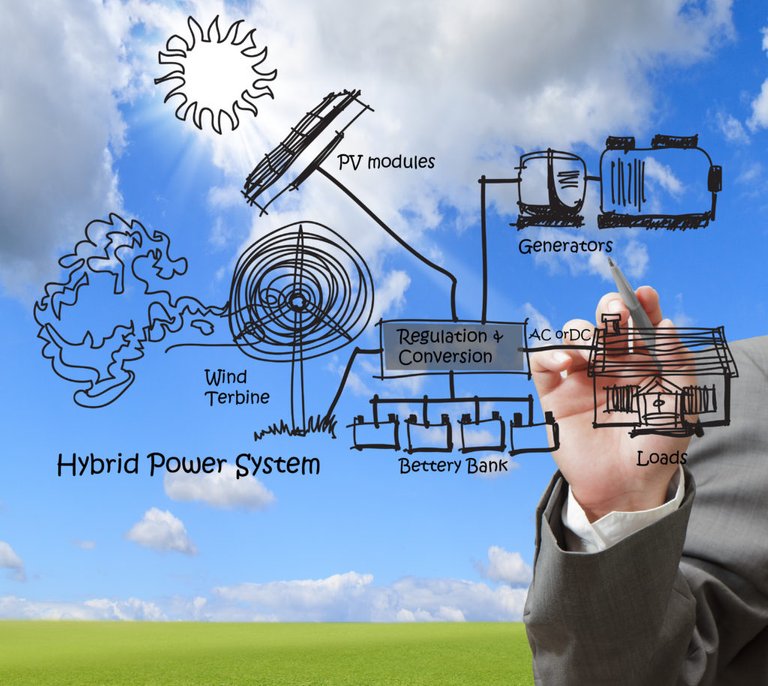Feasibility Studies for Renewable Projects
There is a lot of activity around adding renewable projects to isolated system and/or behind the meter. Renewable generation development has matured a lot in the last 10 years, and solar has come down in price to the point that the risk of installation is very low.

Graph published by IRENA from an Article titled: How Falling Costs Make Renewables a Cost-effective Investment
The yellow line is PV solar and the grey line is onshore wind. Its 2020 and PV Solar is on par with onshore wind for the first time on a kwh cost basis, below $0.05 USD/kwh. Offshore wind and CSP solar are dropping too but they are still closer to $0.1 USD/kwh, or double the price of PV and onshore wind.
Couple the high cost of energy in some markets with businesses with large cash reserves, developing behind-the-meter generation starts to be come very attractive.
Then there is the capital cost of storage predicted to be below $200 USD/kwh (for a 4h battery) by 2030, that is a 50% reduction from today.

NREL paper titled: Cost Projections for Utility-Scale Battery
Storage: 2020 Update
Coupling PV solar with storage could meet a signifcant amount of on-site energy requirements, below market rates. But before you can know if there is a fit for your site, you need a feasibility study.
What is a feasibility study
A feasibility study, in general helps a business determine if something can be done, and start to understand the risks of doing (or not doing) that thing.
The Merriam-Webster definition is simply, "a study to show if something can be done", but I think for this type of project, Investopedia does a better job at the definition.
A feasibility study is an analysis that takes all of a project's relevant factors into account—including economic, technical, legal, and scheduling considerations—to ascertain the likelihood of completing the project successfully.
https://www.investopedia.com/terms/f/feasibility-study.asp
My role is typically to provide the technical and project management portions of the study, and provide inputs for the financial modelling and economic analysis.

Getting the Planning Process Together
Technical Analysis for a Feasibility Study
Before I even get started with the technical analysis for a behind-the-meter project, I like to work with the client to determine the constraints for the project. If they haven't thought about them yet, we workshop ideas until we agree on where the walls are for the project.
Some of the large items that we determine are things like.
How much energy do you want to dispatch?
Before even looking at the current load profile of the business I want to know how much of the energy they would like to displace. Are they aiming for a balance of lower cost self-generation and reliable utility connection? Or do they want to be net-zero so that they can generator 100% of their necessary energy?

System with Storage Integrated
To go further, do they want to be completely self-sufficient for periods of time, disconnecting from the grid completely. This is a microgrid type project.
We talk about these items even BEFORE we determine if there is a mechanism for selling/producing into the grid.
How much space do you have?
If this is a facility in a business park, there may be very limited amount of space to install PV cells let alone space for a wind turbine.
What is the timeline?
So, how fast do you want to deploy this project? If you want to go online within a year wind is out of the picture. Especially if it is going to be outside financed. The MET tower needs to be in the air longer than that just to understand the wind resource.
PV on the otherhand is much less capital intensive to get started, and if needed more can be easily added to the system. Install 1MW on year one and then another 500kW in year two and three, vs the upfront requirements of installing a single 2MW wind turbine.
Now lets look at the load
The first step for a project like this is to look at the load profile for the facility. Determine its shape, and "texture". What you are trying to answer is:
- Is it balanced throughout the year?
- Is it balanced throughout the week?
- Is it flat or "spiky"?
- etc

Not a real load - from my home energy system
Then. depending on the answers and constraints to the project you can start digging in further. For example, if they want to reduce their utility load as much as practical, we want to see if there are ways to "shape" the load with the generation on site. This can be through automatic load shifting, manually through plant scheduling, etc.
To do this it is best to if the facility has a detailed energy management system broken into business or operating areas, with multiple years of historical 15min or better information.
As a side note, I wrote about this in a recent newsletter where I referenced a paper I was an author on titled "PLC BASED ENTERPRISE ENERGY MANAGEMENT SOLUTIONS" pdf here. I think its time that I update that paper with even easier to integrate solutions that have even more information. If that's something you would be interested in let me know in the comments or on twitter.
Lets Evaluate some Technology
When I have a good understanding of the load profile and the most that would be able to be shaped, I start to look at various technologies and methods to meet the constraints of the project.
If the project goal is to be a 100% self-reliant microgrid for periods extending into DAYS, with full production/operation, then that technology mix will very likely include lots of generation and storage solutions including:
- the main renewable resource (PV, wind, hydro, etc)
- backup power, likely diesel or gas
- chemical storage (Li storage, lead-acid, etc)
- active demand side management and load shedding scenarios
- etc.
This is where I start some very preliminary models with various technology mixes. When I have narrowed the combinations to something reasonable, no more than 5 and no less than 3, its time to have the first presentation.

These scenarios will have preliminary capital cost estimations and risk matrices associated with them. For example, people still feel very strongly about large wind which may cause risk from stakeholder feedback. Or there may be schedule/financial risk on the global lithium or silicon market that affects the cost or delivery of solar and storage.
Refine, Refine, Refine
At this point the team will have alignment on the various technology mixes and its time to refine the models and complete preliminary front end engineering and design for the scenarios.
There is a balance to refine enough to increase the confidence in the end results, but not so much that a lot of energy has been expended on dead end options.
To manage this I work with the owners after every iteration to ensure that they agree with the paths and decisions that I am making before they even see the report.
Time for some Project Management
In parallel with the technical feasibility portion of the project its time to start identifying capital costs, timelines, project risks, etc for the identified scenarios.

Getting the Planning Process Together
This includes determining who the stakeholders are and if they are different for the various scenarios. Working with subject matter experts (SMEs) to determine permitting, testing, etc requirements for the options we are investigating.
I include detailed gantt charts and risk matrices with every study. They are easy to visualize the project and the critical path. In some cases the critical path for the project, and the risks that are out of the owners hand will determine the scenario chosen.
To pick on wind again, if there are onerous permitting requirements associated with wind, and the timelines are both long and not clear; then it may be prudent to chose an option that may have a higher levelized cost of energy (LCOE) but has a much lower set of risks.
Contrast to Isolated Systems
The process for isolated systems is very similar to behind-the-meter projects, the biggest different is integration and information from the system operator. If the project is placing a very large (compared to the system this could be 100kW) facility, the system operator will need to provide detailed information related to interconnection at the start of the project.

This isn't a microgrid
The other consideration when connecting to a system that you don't control is the power purchase agreement and the interconnection agreement (PPA and IA).
These agreements, and the path to obtaining these agreements, are an integral part of the feasibility study. If this type of project isn't something that has been done before, there may be large schedule and expense risks related to the interconnection that are out of the owners control.
How important is a Feasibility Study?
Well, its critical to the predictable success to any project. For small or simple projects they are likely just done in your head, or as part of a standard project approval project. So, even if the project folder doesn't contain a document titled "Feasibility Study: ..." that doesn't mean that the items identified in this article weren't considered.
Opportunity for BTM and Isolated System Projects
With the LCOE for PV solar and onshore wind below $0.05 and the cost of battery storage dropping, there has never been a better time to invest in renewable/storage projects.
If you have any questions or want to discuss developing a feasibility study for your site, contact me today for a free consultation.
If you like this article and want to hear more sign up for our newsletter at jmkengineering.com/newsletter